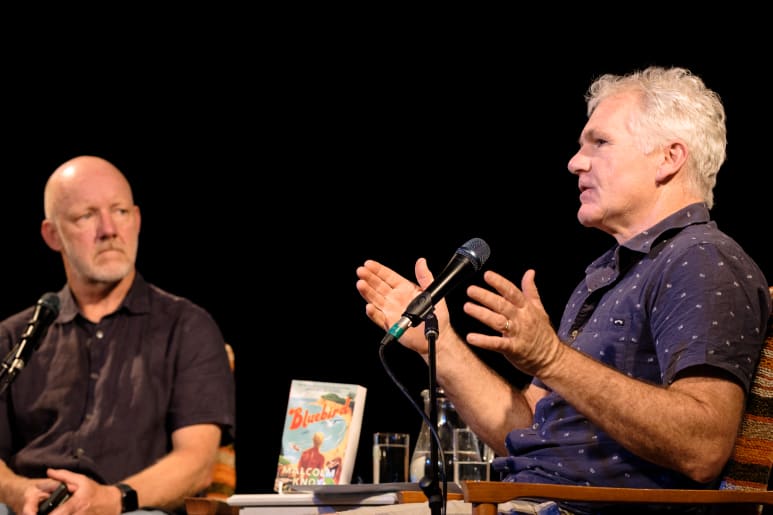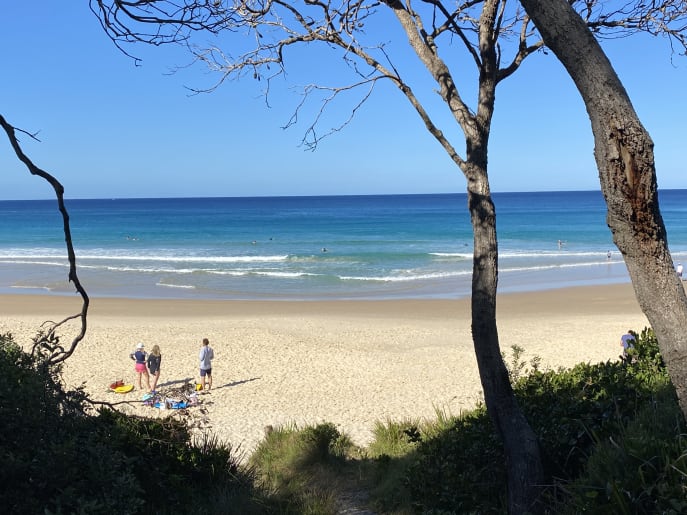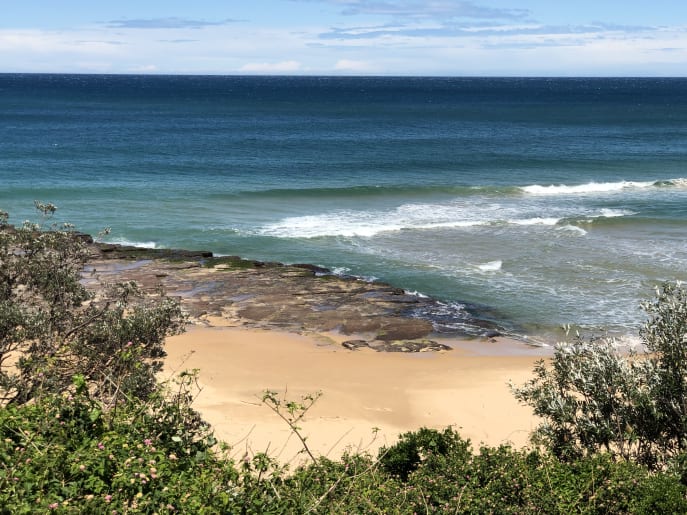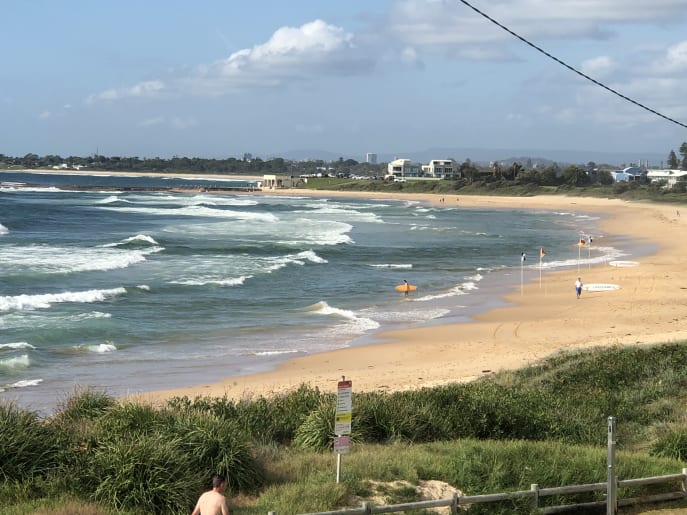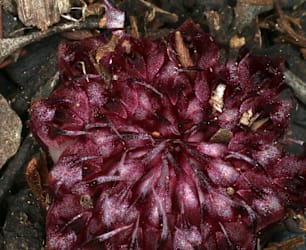During my recent chat with Professor Rob Brander AM, who was appointed Member of the Order of Australia on January 26, he shared his top tips for spotting a rip current and what to do if you ever find yourself caught in one.
What are your best tips for spotting a rip?
"Really spend a few minutes looking up and down the beach at the surf. Most rips sit in deep channels between shallow sandbars, so they look like these narrow green gaps, maybe 5, 10 [or] 20 metres wide – these green paths almost going out through the surf, the whitewater.
"I've got this saying: 'white is nice, green is mean'.
"[If] you look up and down the beach, where you see lots of whitewater and the waves are breaking, that's because it's shallow, and that means you can probably stand up and that water's coming back to the beach. But those green gaps heading offshore, that means it's deeper, water could be over your head, and it could be a rip current.
"So, white is nice, green is mean, look for dark gaps through the whitewater.
"Best tip, always, is when you hit the beach, just spend a few minutes thinking about beach safety, thinking about rips and looking up and down, and if there's lifeguards [or] lifesavers, go ask them."
What should you do if you get caught in one?
"Best thing if you find yourself caught in a rip is always just to float; just stay afloat.
"Floating allows you to conserve your energy [and] you can signal for help. It's so important to signal for help. If there's lifeguards or lifesavers, even surfers around, call for them. Raise your hand for the lifeguards [or] lifesavers, but if there's surfers around, call out that you need some help. Surfers make a lot of rescues.
"Floating just gives you time, and there's actually a good chance that by floating a lot of rips will actually circulate you back into shallow water after a few minutes anyway."
Read more in Rob's December and January columns for the Flame, How to spot a rip and Types and What to do

